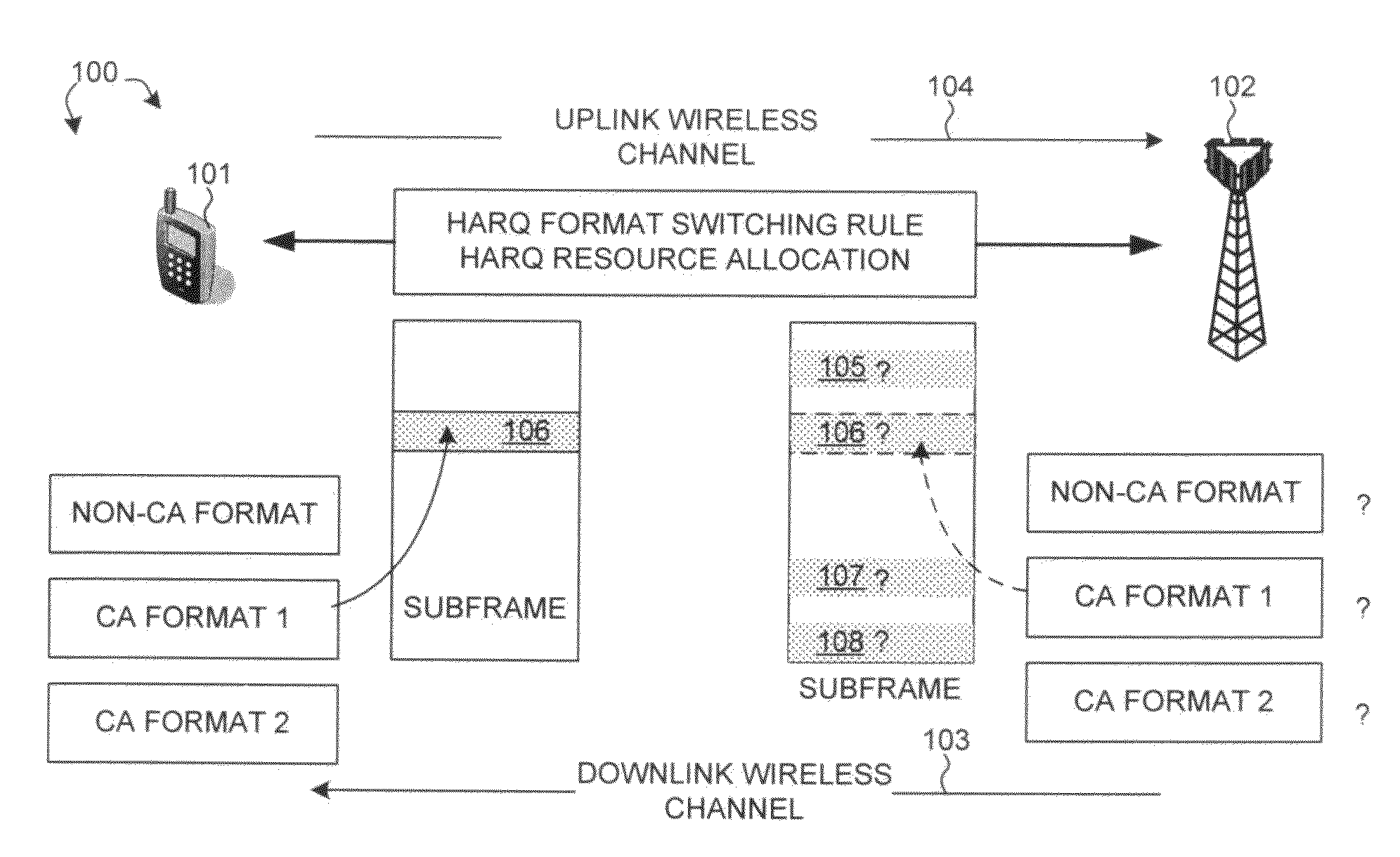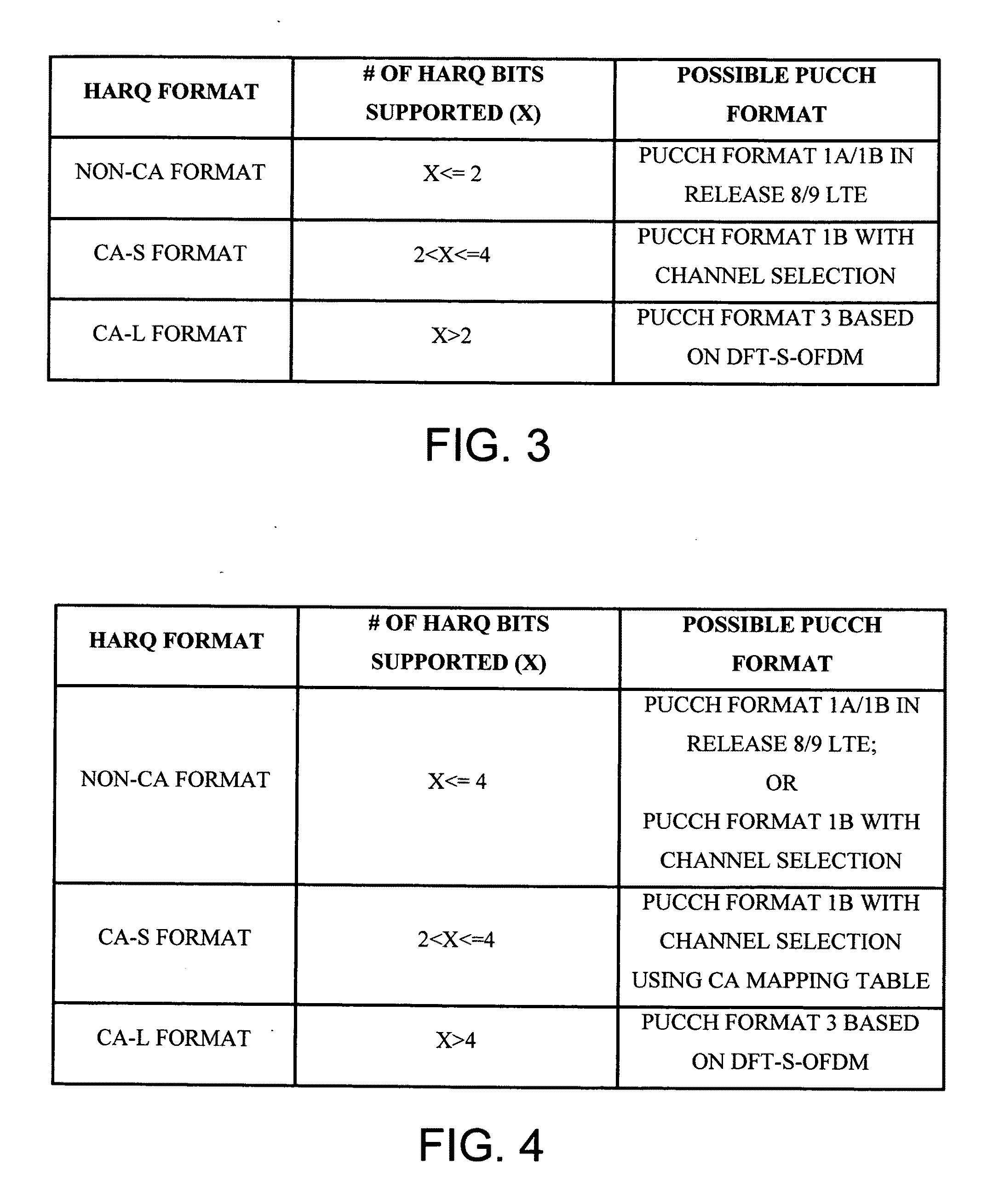Resource allocation of uplink HARQ feedback channel for carrier aggregation in OFDMA systems
a carrier aggregation and resource allocation technology, applied in the field of wireless network communications, can solve the problems of inability to reliably connect to wireless links, inefficient ca-format harq, and inability to design existing harq feedback channels, so as to reduce the risk of ue and enb mismatch
- Summary
- Abstract
- Description
- Claims
- Application Information
AI Technical Summary
Benefits of technology
Problems solved by technology
Method used
Image
Examples
Embodiment Construction
Reference will now be made in detail to some embodiments of the invention, examples of which are illustrated in the accompanying drawings.
FIG. 1 illustrates hybrid automatic repeat request (HARQ) feedback channel design in an LTE-A system 100 in accordance with one novel aspect. LTE-A system 100 comprises a UE101 and an eNB102, both support carrier aggregation (CA) over multiple component carriers (CCs). In a downlink wireless channel 103, eNB102 transmits one or multiple downlink (DL) grants to UE101. In an uplink wireless channel 104, UE141 replies with uplink (UL) HARQ feedback information to eNB102. There are more than one formats in the system to support HARQ feedback channel for both non-CA and CA mode (e.g., non-CA format, CA format 1, and CA format 2). Due to the unreliability of the wireless channel, UE101 and eNB102 may have different understandings about which format is applied. In addition, because multiple DL component carriers are supported, there may be only one HARQ ...
PUM
 Login to View More
Login to View More Abstract
Description
Claims
Application Information
 Login to View More
Login to View More - R&D
- Intellectual Property
- Life Sciences
- Materials
- Tech Scout
- Unparalleled Data Quality
- Higher Quality Content
- 60% Fewer Hallucinations
Browse by: Latest US Patents, China's latest patents, Technical Efficacy Thesaurus, Application Domain, Technology Topic, Popular Technical Reports.
© 2025 PatSnap. All rights reserved.Legal|Privacy policy|Modern Slavery Act Transparency Statement|Sitemap|About US| Contact US: help@patsnap.com



